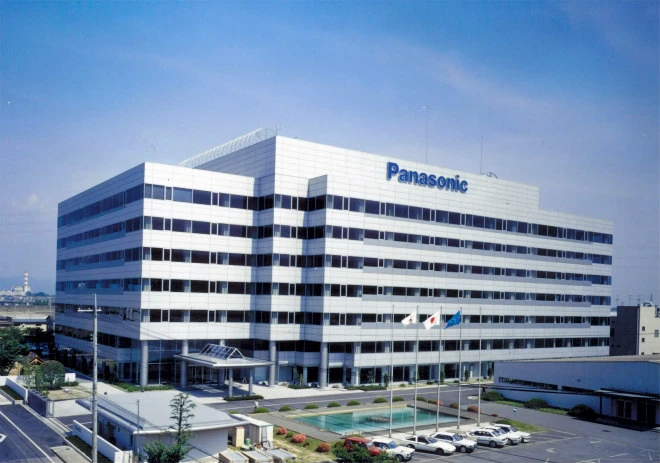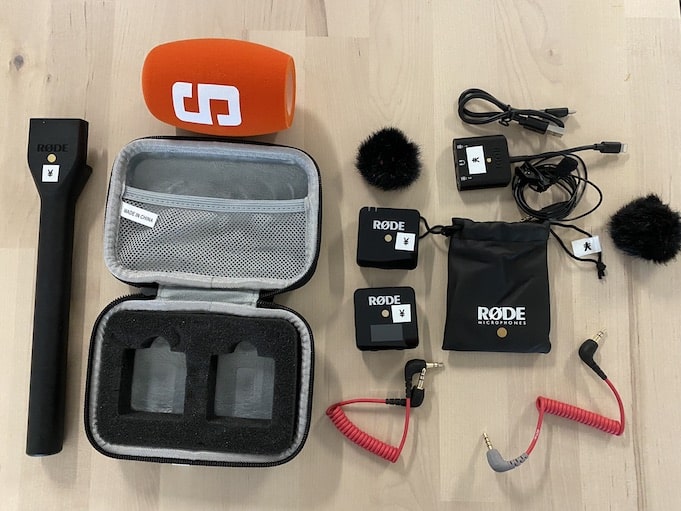Warehouse Management Software: Maintaining an Overview of Inventory
- Better Supply Chain Management by Managing Warehouse Assets More Efficiently
- How Can I Manage My Stock in a Simple Way?
- Can You Also Use Excel to Manage Your Assets?
- Can You Manage Your Stock for Free With a Software?
- Good Warehouse Management Software for Small Businesses
- How Useful Is Warehouse Management With an App?
- Make Warehouse Management More Efficient With the Advantages of Online Software

With Timly, warehouse operations are done with just a few clicks
Better Supply Chain Management by Managing Warehouse Assets More Efficiently
It is often not so easy to determine what is in stock and where. After all, it is necessary to historically trace who has taken something and to plan for the future what it should be used for. At the same time, today’s customers are often more demanding and want to receive deliveries more quickly or have orders fulfilled at short notice. Traditional warehouse processes often no longer meet these demands.
Many companies realise that they are creating long-term problems with poorly maintained Excel lists or goods withdrawals on demand that are not documented. They are rightly looking for warehouse management software with which critical fill levels can be observed and all stock levels can also be easily called up on a mobile basis.
How Can I Manage My Stock in a Simple Way?
The desire for intuitive warehouse management software affects companies and managers from a wide range of sectors, including trade & industry, construction companies, manufacturing companies and logistics service providers.
As with any restructuring, switching to new warehouse software will take some time for employees to get used to. A professional software provider, such as Timly, supports this with training and a support hotline for later questions.
Shortly after installation, a modern inventory software can contribute to a smooth workflow in the company. Since you can monitor all stock levels at any time with Timly, there is more transparency – for all employees to whom you give the technical authorisation. Critical fill levels are detected sooner and data can be viewed or changed directly in the warehouse via mobile phone or tablet in real time.
The question of which quantity of what is at which warehouse location can be answered quickly and from virtually anywhere thanks to cloud-based warehouse software. For planners and buyers, the work steps are simplified – and, if necessary, can be carried out in part without an office computer.
With software like Timly, material consumption can be tracked very easily. The programme can send you notifications as soon as the stock falls below a predefined minimum level. The answer to the frequent question “When do I have to buy more?” is therefore: “When the software sends you a message.”
Can You Also Use Excel to Manage Your Assets?
If it is only a very small amount of goods and a company with few employees, managing stock by means of a table, possibly accessible to several people in a cloud, may work. But if the number of inventory items already exceeds the length of a screen page, it becomes confusing.
In addition, if you want to make a change to the table without being on a PC, the Excel version reaches its limits. Using a large Excel spreadsheet on a smartphone in the warehouse, for example, is very impractical. It is advisable to rely instead on warehouse management software that meets all your requirements. Keep in mind that managing stock with Excel or even paper lists is inefficient and thus slows down the company’s success.
Without an elaborated warehouse management process you won’t be able to see who checked material in or out and when. Any errors that may have occurred are therefore difficult to rectify. Especially if you have to manage bulk items such as disinfectants, protective goggles or work gloves, you should not save money at the expense of clarity. Likewise, the effort increases if stocks have to be managed at several company locations.
Moreover, a simple table cannot provide additional information: The integration of pictures or PDFs is difficult. Above all, Excel documents are self-contained units and not linked parts of a large tracked inventory database that can use interfaces to other business software.
Asset Management Software in Use by Our Customers
The Timly software is continuously evolving to meet the needs of our customers. In various success stories, we show you how Timly optimizes processes in companies, thereby saving significant effort. With Timly, inventory management becomes child’s play.

Optimized Device Management With Innovative Self-Inventory
SodaStream is the world market leader for water sparkling systems for domestic use and has a lot of IT equipment at its various locations. Many colleagues now work from their home offices. A digital solution for the efficient management of IT end devices became necessary...

Panasonic x Timly: Driving Technological Innovation
One of the most remarkable aspects of human ingenuity is our ability to innovate. Innovation is embedded in the DNA of consumer electronics giant Panasonic, which has diversified into a number of sectors, from heavy industry to construction...

Manage Video Equipment Efficiently Without Much Effort
The Hamburg media company always does outstanding journalistic work and is characterized by independent reporting. In order to maintain journalistic quality, the teams work with highly specialized devices – these need to be managed efficiently...

Smart City Asset Management – Timly in Use at DIGOOH
The core business of DIGOOH Media GmbH in Cologne is to manage digital city light posters (DCLP) for outdoor use in various cities in Germany. The challenge here lies in making the client’s communication message always available at the right time, in the right place...
(No credit card required)
Can You Manage Your Stock for Free With a Software?
Free warehouse management software is often a product that offers only basic functions, unless you pay something. Other programmes have been created in the open source community because a developer needed a specific solution for his own business. Using such software brings with it a certain inefficiency. In many cases, the usage options available there are not sufficient.
To avoid opportunity costs, it is better to opt for a fee-based solution. Professional software companies discuss with their customers how their warehouse assets can be digitalised. They determine the exact needs in advance and can thus offer a customised software variant.
In the start-up phase, however, it can make sense to start with freeware if you first want to find out in an everyday test which concrete requirements you have for a warehouse management software. In most cases, you will notice the limited range of functions offered by free programmes.
In this case, make a note of which extensions you would like to have, so that you can inform the Timly team about them later. One conceivable function that can be added to Timly is the observation of best-before dates. For certain products whose material and reliability deteriorate over time, a note can appear automatically after the expiry date, encouraging you to stop using them.
Good Warehouse Management Software for Small Businesses
Even for businesses with only a small warehouse, it is important to always have an overview of stocks and material supplies for efficient enterprise resource planning. The advantages of efficient stock software also become apparent with only a few employees. Thanks to the modular structure of Timly, only those data entry fields and functions are implemented that are needed in the respective company’s daily routine.
This means that you do not need to understand and ignore interfaces or control panels in your daily routine that are only relevant for large companies. With paper-based order picking, companies are not flexible enough for today’s fast-moving times. Many customers and orders are very tightly scheduled, so time wasted due to inefficient material management must be avoided.
Even in small businesses, however, employees no longer need to manually match texts from product packaging with order data, because with good warehouse management software, all it takes is a quick scan with the company smartphone. The company inventory and stock levels are linked to the cloud-based database via QR codes in software like Timly.
How Useful Is Warehouse Management With an App?
In general, modern warehouse management software keeps things tidy and contributes to better utilisation of rooms, machines and staff.
Not only can searching for objects in the warehouse be very time consuming without a software; in the worst case, even production shutdowns can occur due to insufficient inventory management.
Warehouse software collects data on inventory objects and available material, makes it available to other employees and displays it clearly so that decisions regarding optimisation potentials can be made more easily and fact-based.
For successful paperless inventory documentation, the use of the company’s mobile devices is essential.

Items, tools or pallets no longer need to be brought to a fixed scanner. Instead, employees can scan the objects directly at their storage location after attaching QR code labels. Manual post-recording and unwieldy paper lists are thus unnecessary.
Inventory management software such as Timly also plays an important role in resource planning (Enterprise Resource Planning). After all, the distances for the company’s planners are shortened enormously if they can access information on material stocks from any location with just a few clicks.
Make Warehouse Management More Efficient With the Advantages of Online Software
You can use Timly as a fully automated solution as a warehouse management software. A typical moment when companies opt for specialised warehouse software is when the warehouse functions of the ERP system are no longer sufficient for current needs. In this case, it is advisable to purchase modular software in order to gradually upgrade functions.
For example, the ‘first in – first out’ principle can be better implemented with cloud-based wms (warehouse management systems) in the area of goods receipt and dispatch, because all parts in the warehouse are easier to identify. Successful stock management also includes the task of not mixing old and new stock in case of material or design changes.
Furthermore, with good warehouse management systems (wms) you will no longer have to dispose of old stock that has not been used up in time. Production and supply chains can be tracked concretely via batch management. This helps, for example, in the event of manufacturing or material defects. Feature-rich stock management software with customisable modules is easy to obtain.
You can easily contact the Timly team and discuss your company’s needs with specialists. As a result, you will be provided with warehouse software whose modules fit your daily work routine. In this way, your employees and you will save time in the future when searching for specific objects, but also avoid inventories not being used correctly.
Similar Blog Posts:
Book an online demo - free and without obligation - or create your free trial account directly.

























